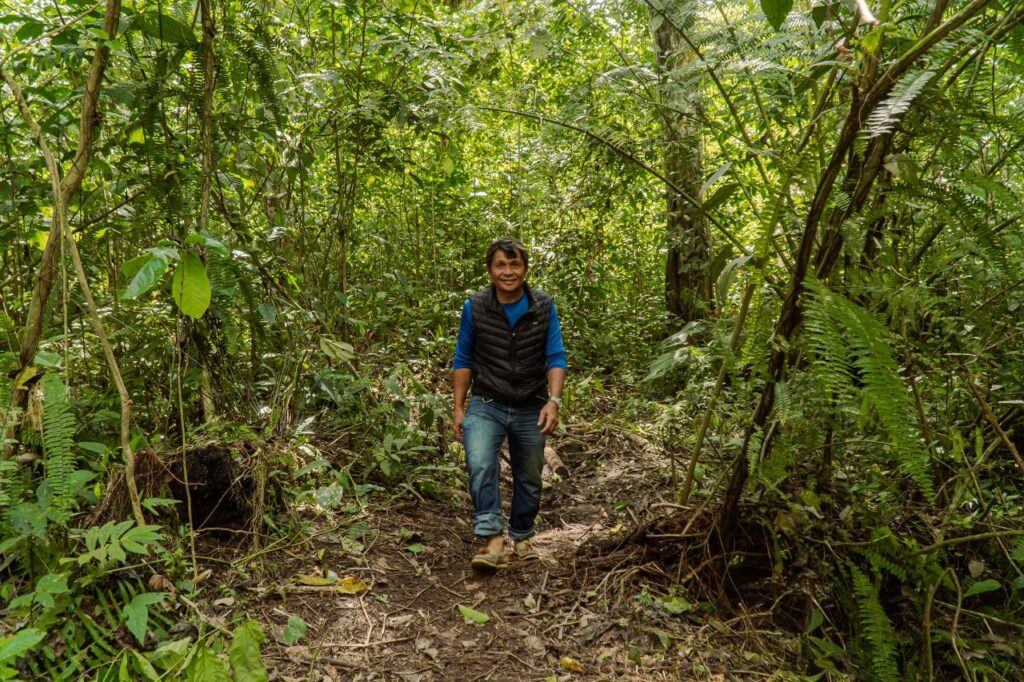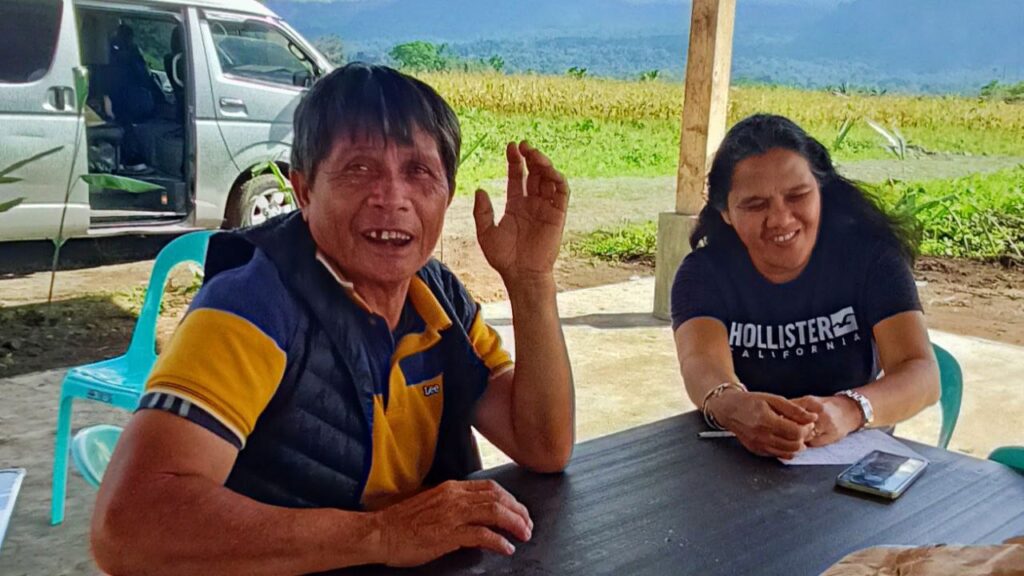Story by Meiyoshi Masgon
Butig, Lanao del Sur, 1979. Sunlight dances on the calloused fingers of Sultan Macaranong, better known to everyone as Frankie, as he plants coffee with his father on the thickly forested foothills of Mt. Macalupog. Back then, Robusta wasn’t just beans; it was liquid gold, hauled in buckets to the coffee maker Nestlé in Cagayan de Oro City, filling this 13-year-old’s pockets with dreams as vast as the lush rice paddies stretching below. The demanding 6-hour delivery drive at that time reflected both the distance and determination in young Frankie’s efforts. These traits would later in life propel him to become a key pillar of Butig’s Federation of Farmers.

With each bean in the soil, Frankie planted a piece of himself. More than a farmer, he was tied to Butig’s history, like the ancient lawaan trees. As crops thrived and laughter filled the fields, Frankie became a keeper of local stories, sharing tales of past Sultans amid the rice paddies. He guarded time with his warm voice, spinning stories of resilience and triumph, much like the rhythmic kulintang gongs.

But history, like seasons, can change quickly. Coffee trees gave way to rice and corn, influenced by talks of irrigation projects and shifting markets. The National Irrigation Authority (NIA) arrived, prioritizing rice and corn production, and sadly, tree cutting, including coffee trees, became rampant. Farmers, Frankie included, concentrated on producing tons of rice, with Frankie himself earning roughly Php35,000 for 250 sacks harvested. Their unique rice variety, “lamik,” initially thrived, gaining popularity in the local market due to its quality.
However, outside influences kept disturbing their advancements. Importation posed a threat to their abundant harvest, and the winds of change carried unsettling murmurs once more. Political unrest compounded the situation, with exacerbated clan conflicts, a full-scale war in 2000-2002, and even an extremist group’s occupation in 2017, causing further disruptions in coffee, rice, and corn production. These persistent challenges burdened the community, affecting not just their livelihoods but also their food supply and economic stability. Butig, much like the rest of Lanao del Sur, fell into the grip of poverty.
Despite everything, Frankie stood strong. He saw worry on his neighbors’ faces and heard fear in their hearts. Yet, he also noticed Butig’s unbreakable spirit, a flame passed down through generations. Familiar with every part of the fields and tuned to every sign of despair and hope, Frankie held meetings under betel trees. His calloused hands reassured, and his warm voice comforted anxieties. He reminded them of Butig’s strength, the resilience of ancestors who faced worse storms, and the unyielding spirit flowing like the mighty Malaig River in their veins.

Frankie, the farmer federation leader, isn’t just a witness to Butig’s changes; he’s one of its respected community pillars. He’s like the enduring kulintang playing ancient melodies, the sturdy lawaan tree providing shade, and the voice that brings courage in tough times. Frankie reminds us that Butig, like the coffee plants he nurtured, will rise stronger, deeply connected to its people and Sultan Macaranong’s spirit. Animated and jolly, Frankie embodies Butig’s cultural revival.
